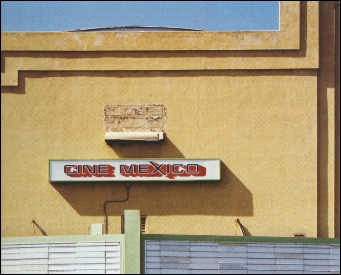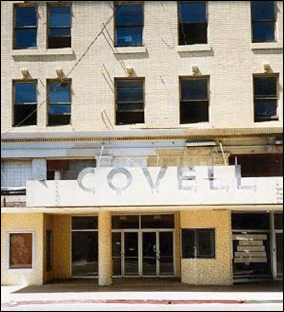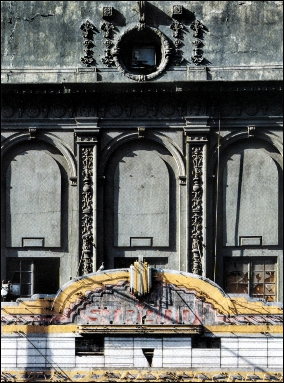| |||||||
Stages and Screens of Modesto - Treading the Boards We lost The Strand, Modesto's grandest movie palace, to neglect and fire; the Covell Theater is gone, too, after being stripped of everything including its dignity. Only the State, after years of decline, has survived to see a rebirth and restoration and refinement of its art deco styling as designed by architect S. Charles Lee. In the new Millenium, the Gallo Center for the Arts joins the State as centers for live performance (and film at the State), Downtown movies shine from the 18 state-of-the-art screens of Brenden Theatres, located partially on the site of the old Strand. On McHenry Avenue, beyond the shadow and down the street from the former Briggsmore Theater, Regal Cinemas offers 10 movie screens with luxury recliners for seating. The rest of Modesto's stages and screens are part of its history. To be recalled in words and a few photographs and in the memories of those still left to recall the joys once offered on a special afternoon or evening, being entertained. The Early Years Sol P. Elias wrote about Modesto's first space for performance in "Stories of Stanislaus" published in 1924: "Modesto's first show house - "The Theatre," as it was lovingly called by the people of the day – was located in the loft of the old Frank Ross' livery stables on the south side of "I," between Ninth and Tenth streets. Here the floor was cleared of the debris and made ready for the play. A large raised wooden stage was improvised and erected in the rear of this space and on it the first dramatic performance in Modesto took place. A few small dressing rooms were attached. The curtain was a very simple affair and as was usual in the early theaters rolled from the bottom. There was some scenery, but not much more than the famous Shakespeare used in his original productions of his ever-living dramas. Ordinary tallow candles served for footlights, while kerosene lamps furnished the illumination. The seats were the regular wooden chairs that in after years graced the old Rogers' Hall and Plato's Opera House. This crudely arranged and dimly lighted place, with its meager appointments and contracted limitations, was the "Theater" in the early 70s in Modesto, and it served the purpose admirably, for in those piping times the town was young and the population did not clamor for a more artistic setting for their local talent shows." ROGERS HALL (Used from 1877-1892, demolished in 1966) The first "legitimate" entertainment space in Modesto. It boasted a three-cornered stage, surrounded by gas footlights. There was sawdust on the floor and "hard-backed wooden benches" for seats. Little ventilation was provided by the screened windows. Here, early Modestans took part in public gatherings, dances, plays, "first rate theatrical shows," graduations and political rallies. Since it was on the second floor, the hall could only be entered by way of an outside wooden stairway attached to another buildng across the street, then crossing back over the alley on a narrow wooden bridge that entered the hall through a five foot wide entrance. At times, as many as 400 people would attend activities at the hall. PLATO'S OPERA HOUSE (Used from 1892-1910, demolished in the 1960s) THE AUDITORIUM (Also known as Merry Garden Ballroom and Skating Rink)
Next: Landmarks/Stages and Screens/The Nickelodeons Previous: Landmarks/A Place to Stay/Hotel Modesto | |||||||



